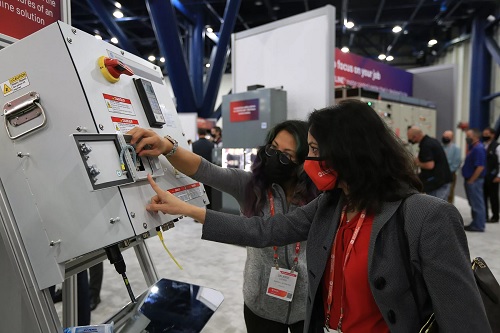Rockwell Automation, along with its PartnerNetwork™, concluded the 30th year of its signature Automation Fair showcase event from Nov. 10-11 in Houston, Texas.

Summarizing the event, Scott Wooldridge, President of Asia Pacific at Rockwell Automation, noted that industrial automation had changed at such an exponential rate that enterprises should be looking past Industry 4.0 and begin charting a roadmap towards Industry 5.0.
"This is an extraordinary period of exceptional change in our industry, accelerated by the COVID-19 pandemic. Edge-and-cloud converged development environments, artificial intelligence (AI) and autonomous production have shifted from emerging technologies to critical and useful solutions today," he said.
Remote connectivity, advanced engineering with multiple digital twins, mixing physical and digital assets, and the change of human-machine interaction have expedited the advent of Industry 5.0. A Frost and Sullivan report defined the differences between Industry 4.0 and Industry 5.0, highlighting the aspects below as attainable and impactful changes manufacturers can make:
Delivery of customer service
Hyper customization
Responsive and distributed supply chains
Experience activated (interactive) products
Return of manpower to factories
"With competition for technology talent extending globally, Rockwell Automation aims to deliver systems that make human-machine interactions more efficient," said Wooldridge. "The goal is to augment existing capabilities; maximizing output and minimizing reliance on having workers physically present, to enhance both efficiency and safety."
Technology as an enabler for Industry 5.0
It will be crucial for manufacturers to leverage technology if they are to advance to Industry 5.0. During the event, Rockwell Automation outlined four crucial areas where technology can be leveraged:
The evolution of cloud, edge, and software
Universal control and converged integrated development environments (IDEs)
AI-native operation management, including software as a service (SaaS) and digital services
utonomous systems and augmented workforce
To enable control at the enterprise level, systems with software-defined architecture and the underlying hardware will be needed. "This does not mean that every piece of the system must be changed, or that existing hardware is becoming obsolete," said Wooldridge. "From the device to the edge and to the cloud, the entire process needs to be smart. In the converged environment, control, safety, and motion all come together and must work in an integrated fashion."
Wooldridge explained that by building AI-native architecture, operations management becomes more efficient. AI can be viewed in the lens of process modelling and can help simplify a new generation of design by translating systems output into valuable data insights.
Lastly, transforming automated systems into autonomous systems enables better decisions to expand human possibility. "The autonomous system is an opportunity to rethink the essential principles of autonomous control systems," said Wooldridge. "We have the ability to strengthen existing systems with new technology."
Ultimately, technology remains a powerful enabling force. "It must be accessible and understood by users to succeed. Rockwell Automation understands that in a digital-native world, the user experience is paramount to delivering innovative products and solutions that benefit," Wooldridge concluded.














